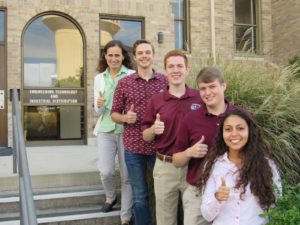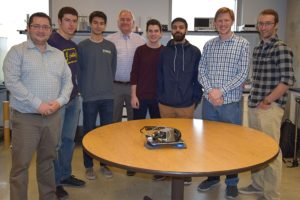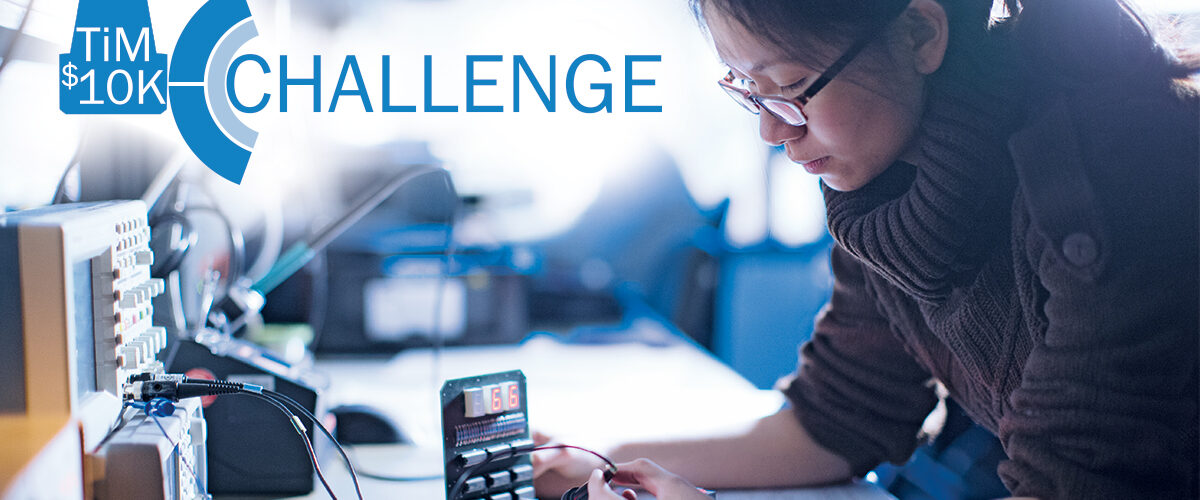 What if you had the chance to develop an industry-changing product using LiDAR technology and also win $10,000 and a trip to Germany? Well, thanks to SICK, Inc.’s TiM$10K Challenge, university students from around the country got this exact opportunity.
What if you had the chance to develop an industry-changing product using LiDAR technology and also win $10,000 and a trip to Germany? Well, thanks to SICK, Inc.’s TiM$10K Challenge, university students from around the country got this exact opportunity.
The challenge was created for the 2018-2019 school year to support innovation and student achievement in automation and technology. Teams who signed up for the challenge were supplied with a 270° SICK LiDAR sensor (TiM) and accessories. The challenge was to solve a problem, create a solution, or bring a new application to any industry that could utilize SICK LiDAR. With endless possibilities, SICK received submissions that ranged from extremely creative, like using LiDAR on an amusement park ride, to very practical, like pothole detection. But ultimately, only the top three won prizes.
There’s an opportunity for a business to get started from any of these projects. These are high-quality products with great market value that all provide improvements to the industry. We’re extremely proud of all the students who participated.”
Tony Peet, SICK, Inc. CEO
Contest Background
Each team was asked to submit a video and paper for judging upon completion of the project. A panel of judges decided the winning submissions based on creativity and innovation, ability to solve a customer problem, commercial potential to productize and market the application, entrepreneurship of the team, and reporting.
The three winning teams won a cash award of $10K for first place, $5K for second place, and $3K for third place. In addition to bragging rights and the cash prize, the first place team, along with the advising professor, will go on an all-expense paid trip to Germany to visit the SICK headquarters and manufacturing facility in summer 2019.
Contest Winners
The winners of the 2019 TiM$10K Challenge were recently announced and they are:
First Place – Foreign Object Detection on Airport Tarmacs
Texas A&M University Team 2 used the SICK LiDAR sensor to detect foreign object debris (FOD) on airport tarmacs, like screws or metal strips from planes. Each year, FOD costs the aviation industry billions of dollars in airplane repairs. FOD also has potential deadly consequences if not maintained properly. The system built by this team is an AGV that drives around the tarmac and detects any FOD with the LiDAR sensor.
“It was really cool to start with a sensor and come up with a real-world solution,” said Emily Stuart, a member of Team 2 and a student at Texas A&M University. “This project showed us the customer perspective and real-world application of what we’ve been studying in school.”
Second Place – Visual Impairment Walking Aid

The second place team, Texas A&M University Team 1, developed a walking aid for the visually impaired using the SICK LiDAR sensor. Instead of implementing the device in a cane or other walking aid, the team created a wearable device that provides a person an audio warning in advance of an obstacle. The LiDAR sensor is used to detect the upcoming obstacles. This walking aid is intended to be used as a complement to the white cane.
“This prototype was a great proof of concept, but it still had its major drawbacks,” said the Texas A&M Team 1. “By addressing these and adding some more convenience items this simple idea could be turned into a product that truly benefits those in need, which was our whole mission in taking on this project.”
Third Place – Low-Friction Test Bed for CubeSats (Micro Satellites)

Purdue University created a low-friction test bed to test CubeSats, which are micro satellites. These are commonly used in experiments to demonstrate new technology in Low Earth Orbit. One major application of these micro satellites are rendezvous proximity operations, where a LiDAR sensor is used to accurately track its position to another object. The team developed a low-friction test bed and a micro satellite, TracSat.
“The low-friction test bed, TracSat, and the TiM561 have become new assets for Purdue’s Aerospace Engineering department,” said the team from Purdue University. “The setup has become a permanent fixture in the laboratory and will become an annual design course, where various rendezvous proximity operations can be designed, tested, and iterated.”
LiDAR Sensor Technology
The LiDAR sensor (TiM) provided to teams utilizes a rotating pulsed laser to calculate distances to its surroundings based on the time-of-flight principle. The rotating laser effectively forms a circle around the TiM, inside which users can create individual fields to monitor for the presence or absence of an object. The reliability of the sensor is improved by SICK’s patented High-Definition Distance Measurement (HDDM) technology, which samples each measurement several times and averages the results.
As the TiM$10K teams ably proved, monitoring the individual fields for objects can be a great way to solve applications that other sensing technologies cannot. This makes the TiM invaluable in a variety of industrial applications, as well as building automation, stationary, and mobile applications. In addition, the integrated Ethernet interface allows for remote monitoring, measurement, and navigation which presented a ton of creative possibilities for the TiM$10K teams.
Register for the 2019-2020 TiM$10K Challenge
SICK is now accepting entries for the TiM$10K Challenge for the 2019-2020 school year! Student teams can register online by September 16, 2019. Student teams are encouraged to use their creativity and technical knowledge to incorporate the SICK LiDAR for any industry in any application. Advisers/professors are allowed to guide the student teams as required. For more details, visit the challenge website.
 This contest was supported by the PMMI Foundation’s U Skills Fund. PMMI U Skills Fund works to grow awareness of careers in packaging and processing, providing assistance to schools and programs that develop students to excel in the industry.
This contest was supported by the PMMI Foundation’s U Skills Fund. PMMI U Skills Fund works to grow awareness of careers in packaging and processing, providing assistance to schools and programs that develop students to excel in the industry.





